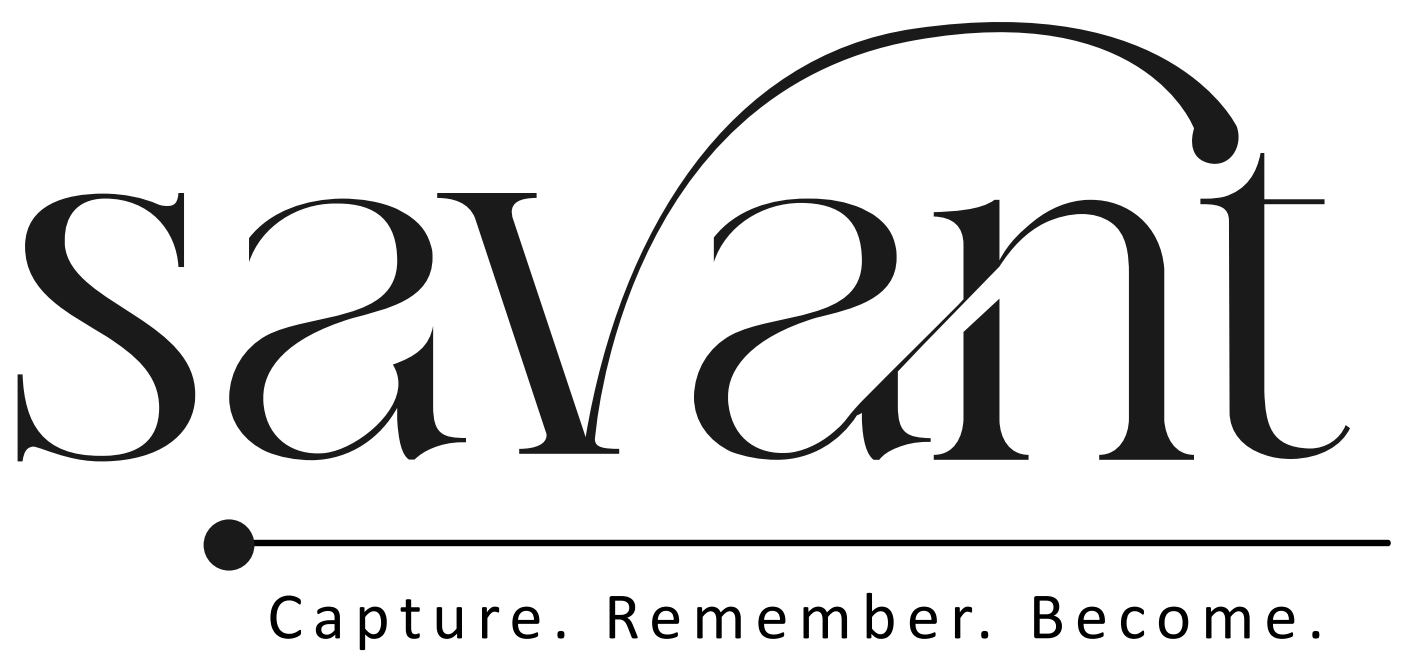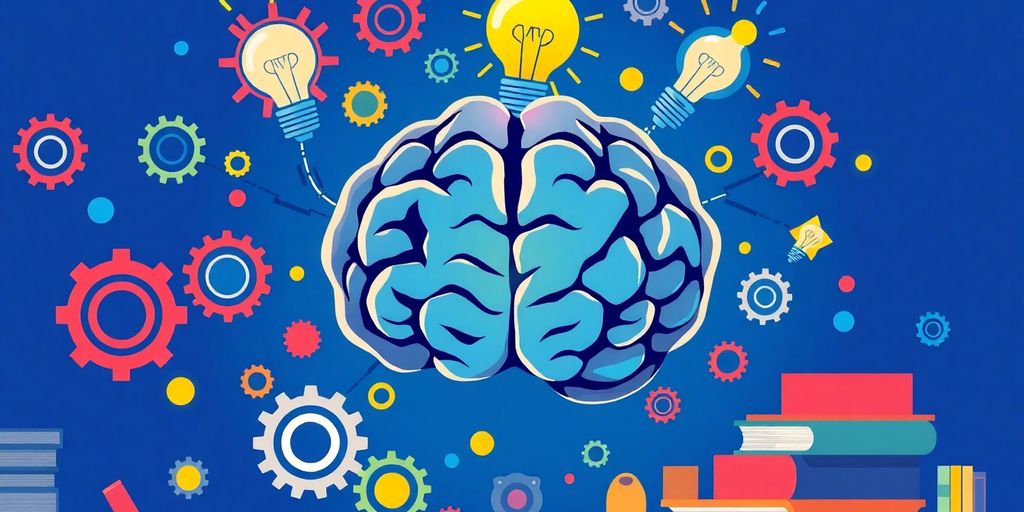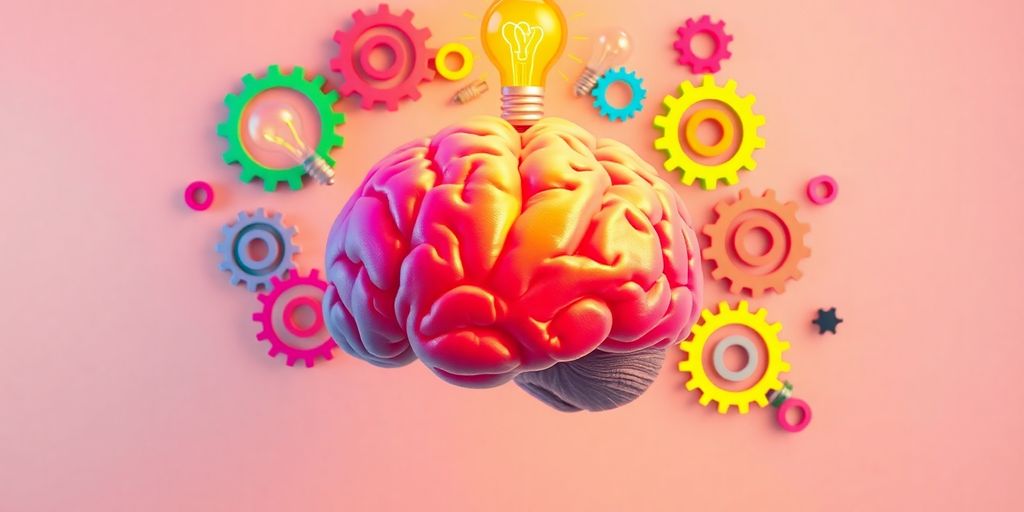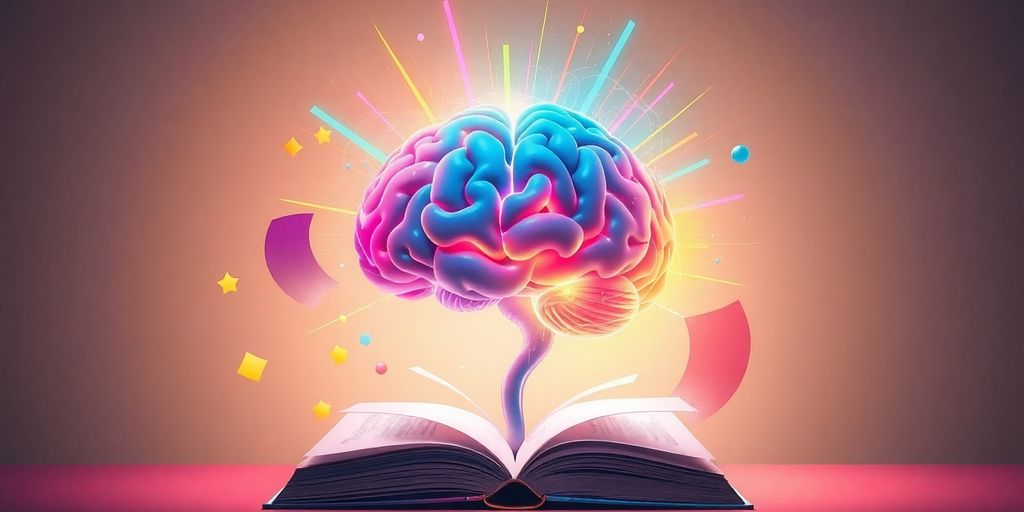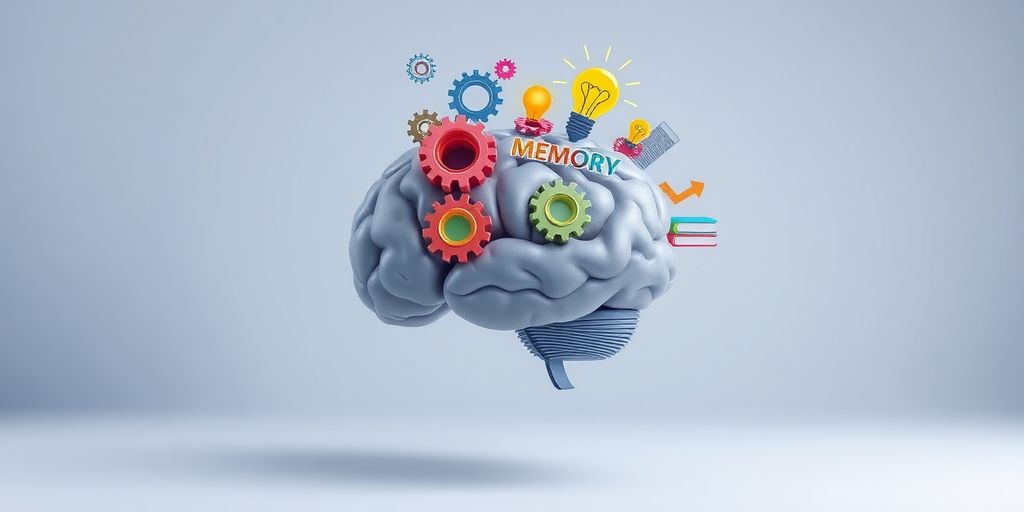If you’re looking to become a better reader and boost your productivity, there are several key strategies you can adopt. From creating a focused environment to using effective learning techniques, these tips can help you absorb more information and retain it longer. Here’s a summary of essential productivity tips for readers that can enhance your reading experience and efficiency.
Key Takeaways
- Break down complex topics into smaller parts to make learning easier.
- Regularly review what you’ve read to improve memory and understanding.
- Choose a quiet and comfortable place to read without distractions.
- Engage multiple senses through multimedia resources for better retention.
- Join a reading community to share insights and stay motivated.
Mastering the Art of Incremental Learning
Learning can feel overwhelming, but breaking it down into smaller parts makes it easier and more enjoyable. Incremental learning is the key to mastering new skills! Here’s how you can make it work for you:
Breaking Down Complex Topics
- Start with the basics and gradually dive deeper.
- Use simple explanations and examples to clarify tough concepts.
- Create a list of topics to cover, focusing on one at a time.
Consistent Review Sessions
- Schedule regular times to revisit what you’ve learned.
- Use tools like flashcards or quizzes to test your memory.
- The cyclical nature of the process provides incremental benefits, allowing you to improve your understanding over time.
Tracking Your Progress
- Keep a journal or digital log of what you’ve learned.
- Celebrate small wins to stay motivated.
- Adjust your learning plan based on what works best for you.
Remember, learning is a journey, not a race! Take your time and enjoy the process.
Active Recall: A Game Changer for Memory
Testing Yourself Regularly
One of the best ways to boost your memory is by testing yourself on what you’ve learned. This method, known as active recall, helps you remember information better. Instead of just reading or listening, try to write down what you remember. This effort makes your brain work harder, which strengthens your memory.
Using Flashcards Effectively
Flashcards are a fantastic tool for active recall. You can create your own or use apps that offer them. When you use flashcards, make sure to shuffle them often. This way, you’re not just memorizing the order but truly recalling the information. Active recall requires making an effort to remember something you’ve learned once before. The act of doing so helps you remember even better in the long-term.
Incorporating Spaced Repetition
Spaced repetition is a technique where you review information at increasing intervals. For example, you might review a flashcard today, then again in two days, then a week later. This method helps combat the forgetting curve and keeps the information fresh in your mind. Here’s a simple schedule you can follow:
| Time Interval | Review Frequency |
|---|---|
| 1 day | 1 time |
| 3 days | 1 time |
| 1 week | 1 time |
| 1 month | 1 time |
| 3 months | 1 time |
By using these techniques, you can make your learning more effective and enjoyable!
Creating a Productive Reading Environment
Choosing the Right Spot
Finding the perfect place to read can make a huge difference. A cozy corner or a quiet room can help you focus better. Think about where you feel most comfortable and can concentrate without interruptions.
Minimizing Distractions
Distractions can really mess with your reading flow. Here are some tips to keep them at bay:
- Turn off notifications on your phone.
- Use apps that block distracting websites.
- Let others know you need some quiet time.
Setting Up a Reading Routine
Creating a routine can help you read more consistently. Try to set aside a specific time each day for reading. This could be in the morning with your coffee or at night before bed. Consistency is key!
A good reading environment is all about comfort and focus. When you set the stage right, you’ll find yourself enjoying your reading time even more!
The Power of Multi-Sensory Learning
Engaging Multiple Senses
Using more than one sense while learning can make a big difference. When you see, hear, and touch information, your brain creates stronger connections. This helps you remember things better! For example, if you’re learning a new word, seeing it, hearing it, and writing it down can help you grasp it more fully.
Using Multimedia Flashcards
Multimedia flashcards are a fun way to learn. They can include pictures, sounds, and videos, not just text. Here’s why they work:
- Enhanced Memory Retention: Different senses working together make it easier to remember.
- Engagement and Motivation: Flashcards with sounds and images keep you interested.
- Accommodating Different Learning Styles: Everyone learns differently. Some people learn best by seeing, while others prefer hearing or writing.
Benefits of Interactive Learning
Interactive learning is all about being involved. When you actively participate, you’re more likely to understand and remember what you learn. Here are some benefits:
- Active Participation: Engaging with the material makes it stick.
- Reduced Cognitive Load: Learning in smaller chunks is easier and less tiring.
- Deeper Understanding: You can connect new ideas with what you already know.
Learning is like building a bridge. The more connections you make, the stronger it becomes!
Building Consistent Reading Habits
Setting Daily Reading Goals
To build a strong reading habit, start by setting small daily goals. Aim for just 20 minutes of reading each day. This can help you gradually increase your reading time without feeling overwhelmed. You can even track your progress in a simple table:
| Day | Minutes Read | Book Title |
|---|---|---|
| Monday | 20 | The Great Gatsby |
| Tuesday | 25 | To Kill a Mockingbird |
| Wednesday | 30 | 1984 |
Tracking Your Reading Progress
Keeping track of what you read can motivate you to keep going. Use a journal or an app to note down the books you finish and your thoughts on them. This not only helps you remember what you’ve read but also makes reading feel more rewarding.
Making Reading a Routine
Try to read at the same time every day. Whether it’s in the morning with your coffee or before bed, having a set time can make reading a natural part of your day.
Building a reading habit is like planting a seed. With time and care, it will grow into something beautiful.
By following these tips, you can create a consistent reading habit that enriches your life and expands your knowledge!
Enhancing Focus and Concentration
Eliminating Digital Distractions
To really get into your reading, it’s crucial to cut out distractions. This means putting your phone away, turning off notifications, and finding a quiet space. You might even want to use apps that block distracting websites while you read.
Practicing Mindfulness
Mindfulness can help you stay present. Try taking a few deep breaths before you start reading. This simple act can clear your mind and help you focus better on the material. Remember, being in the moment is key to understanding what you read.
Creating a Comfortable Space
Your reading environment matters! Make sure you have a cozy chair, good lighting, and a spot that feels inviting. A comfortable space can make a big difference in how well you concentrate.
Finding the right environment can transform your reading experience.
Quick Tips for Better Focus
- Set a timer: Try reading for 25 minutes, then take a 5-minute break.
- Stay hydrated: Drink water to keep your brain sharp.
- Choose the right time: Find when you feel most alert to read.
By following these tips, you can boost your focus and enjoy your reading sessions much more!
Choosing the Right Books for Your Goals

When it comes to reading, picking the right book can make all the difference. Here’s how to choose wisely:
Understanding Your Purpose
- Ask yourself: Why do I want to read this book? Is it for fun, learning, or work?
- Think about what you enjoy. If you love mysteries, don’t force yourself to read a biography just because it’s popular.
Selecting High-Quality Reads
- Look for books that have good reviews or recommendations from friends.
- Don’t just follow trends; choose books that genuinely interest you.
Knowing When to Quit a Book
- If a book isn’t grabbing your attention, it’s okay to put it down. Life’s too short for boring reads!
- Studies show that 27.9% of readers get through 100 pages before realizing a book isn’t for them. Don’t be one of them!
"Reading should be a joy, not a chore. Find what you love and dive in!"
By understanding your goals and preferences, you can make reading a more enjoyable and productive experience.
The Benefits of Note-Taking While Reading
Different Methods of Note-Taking
Taking notes while reading can be a game changer for your understanding and retention of material. Here are some popular methods:
- Mind Mapping: This visual technique helps you organize thoughts and see connections between ideas.
- Bullet Points: Quick and easy, bullet points allow you to jot down key ideas without getting bogged down.
- Highlighting: Use a highlighter to mark important sections in your book, but remember to keep it minimal.
Using Digital Tools
In today’s tech-savvy world, digital tools can enhance your note-taking experience. Here are some options:
- Apps like Evernote or Notion: These allow you to organize notes, add images, and even collaborate with others.
- Ebook Annotations: Many ebook readers let you highlight text and add notes directly in the book.
Reviewing Your Notes Regularly
Regularly reviewing your notes is crucial for retention. It helps reinforce what you’ve learned and makes it easier to recall later. Here’s a simple schedule you can follow:
- Review notes after each chapter.
- Weekly summaries of your notes.
- Monthly reflections on what you’ve learned.
Taking notes is not just about writing; it’s about engaging with the material. The most effective note-making is active, not passive. This means you should be making meaning from what you learn, not just copying it down.
Engaging with a Reading Community
Connecting with others who love to read can really enhance your experience. Sharing your thoughts and ideas about books can make reading even more enjoyable! Here are some ways to engage with a reading community:
Joining Book Clubs
- Book clubs are a great way to meet new people and discuss what you’ve read.
- You can share your opinions and hear different perspectives.
- It’s a fun way to discover new books you might not have picked up on your own.
Participating in Online Forums
- Online forums allow you to connect with readers from all over the world.
- You can ask questions, share reviews, and get recommendations.
- Platforms like Goodreads are perfect for tracking your reading and connecting with others.
Sharing Your Thoughts and Reviews
- Writing reviews helps you reflect on what you’ve read.
- Sharing your thoughts can inspire others to pick up a book you loved.
- It’s also a way to hold yourself accountable for your reading goals.
Engaging with a reading community not only deepens your understanding of books but also makes the journey of reading more fun and fulfilling!
Leveraging Technology for Better Reading
In today’s world, technology can really help us read better and smarter. Using digital tools can make reading more enjoyable and effective. Here are some ways to leverage technology for your reading journey:
Using Ebooks and Audiobooks
- Ebooks and audiobooks are fantastic for on-the-go reading. You can read or listen while commuting, exercising, or even cooking!
- Apps like Kindle and Audible let you highlight important parts and take notes easily.
Annotating Digitally
- Digital platforms allow you to annotate directly on the text. This means you can mark important sections without damaging the book.
- You can also share your notes with friends or study groups, making it easier to discuss ideas.
Syncing Across Devices
- With cloud services, you can sync your reading progress across devices. Start reading on your phone, and pick up where you left off on your tablet or computer.
- This flexibility means you can read whenever you have a few spare minutes.
Embracing technology in your reading routine can open up new ways to learn and enjoy books.
By using these tools, you can make reading a more engaging and productive experience. Remember, the goal is to enjoy your reading while also boosting your efficiency!
Practicing Critical Reading
Questioning the Author’s Intent
When you read, it’s important to think about what the author is trying to say. Ask yourself why they wrote this book. What message are they trying to share? This helps you connect with the material on a deeper level.
Comparing Different Perspectives
Reading isn’t just about one viewpoint. Try to look at the ideas from different angles. Consider how other authors might approach the same topic. This can give you a broader understanding and help you form your own opinions.
Reflecting on What You’ve Read
After finishing a chapter or section, take a moment to think about it. What did you learn? How does it relate to what you already know? Taking time to reflect can make your reading more meaningful.
"Reading is a conversation. All books talk. But a good book listens as well."
– Mark Haddon
By practicing these techniques, you can become a more engaged and thoughtful reader. Happy reading!
Balancing Reading for Work and Pleasure
Finding the right balance between reading for work and reading for fun can be tricky, but it’s totally doable! Mixing both types of reading can actually boost your overall productivity and happiness. Here are some tips to help you manage your reading time effectively:
Setting Priorities
- Identify your goals: Think about what you want to achieve with your reading. Are you looking to learn something new or just unwind?
- Create a reading list: Make a list of books you want to read for both work and pleasure. This way, you can easily switch between them.
Mixing Genres
- Explore different types: Don’t be afraid to mix genres! Reading fiction can spark creativity, while non-fiction can provide valuable insights.
- Try audiobooks: They’re a great way to enjoy stories while doing other tasks, like exercising or commuting.
Scheduling Time for Both
- Set specific times: Dedicate certain times of the day for work-related reading and others for leisure. This helps you stay focused and enjoy both types of reading without feeling overwhelmed.
- Use breaks wisely: During breaks, pick up a fun book to recharge your mind. It’s a great way to relax and come back to work refreshed.
Balancing your reading can lead to a more fulfilling experience. Whether you write in your journal, meditate, or read for pleasure, these activities can help you generate energy and focus throughout your day.
By following these tips, you can enjoy the best of both worlds and make reading a rewarding part of your life!
Wrapping It Up: Your Path to Better Productivity
So there you have it! Boosting your productivity doesn’t have to be a chore. By breaking tasks into smaller bits, reviewing what you learn, and using fun tools like Savant, you can make your study sessions more effective and enjoyable. Remember, it’s all about finding what works best for you. With a little practice and the right strategies, you’ll be amazed at how much more you can accomplish. So go ahead, give these tips a try, and watch your efficiency soar!
Frequently Asked Questions
What is incremental learning and why is it important?
Incremental learning means breaking down big topics into smaller parts. This makes it easier to understand and remember things over time.
How does active recall help with memory?
Active recall is when you test yourself on what you’ve learned. This practice helps strengthen your memory, making it easier to remember information later.
What can I do to create a better reading environment?
To create a good reading space, choose a quiet spot, reduce distractions, and set a regular time for reading.
What is multi-sensory learning?
Multi-sensory learning involves using different senses, like sight and sound, to understand information better. This approach can help improve memory.
How can I build a daily reading habit?
Start by setting small daily reading goals, keeping track of what you read, and making reading a part of your daily routine.
What are some ways to improve focus while reading?
To enhance focus, eliminate digital distractions, practice mindfulness, and create a comfortable reading space.
How do I choose the right books for my goals?
Consider what you want to achieve with your reading. Pick high-quality books that align with your interests and goals.
Why is note-taking beneficial while reading?
Taking notes helps you remember important points and engage more deeply with the material, aiding understanding.
